The Winning By Design Blueprint Series provides practical advice for every part of a sales organization, including developing a go-to-market strategy — or GTM strategy for short.
In this guide, we answer these questions:
What is a go-to-market strategy?
How do you create a good GTM strategy that works for YOUR product or service?
First we define what “go to market” really means. Then we share our tactical approach on how to build a go-to-market strategy for startups, mature software companies, and everyone in between. Finally, we explain why you need a GTM strategy and where to use it.
This will then help you diversify your revenue, make your business more resilient to economic setbacks, and help you plan for growth. What more could your company be looking for?
Related: Using Sales Conversations to Find Product-Market-Fit
Table of Contents
- What Is a Good Go To Market Strategy?
- Why Do You Need a GTM Strategy?
- Where Can You Apply This Go To Market Strategy?
- How Do I Build a Go To Market Strategy?
- What Are the Elements of a Go To Market Strategy?
- 6 Go To Market Strategy Examples Based on Your CAC
- Case Example: Setbacks of Using a 2-Stage Inside Sales Organization
- Getting Started: Build Your Go-To-Market Strategy
What Is a Good Go To Market Strategy?
A go to market strategy outlines the necessary steps to break into a new market and succeed with those customers. This requires a clear understanding of your target market, a compelling message describing how your product solves their problems, an appropriate pricing strategy, and an effective distribution plan.
In addition, you need to define your pricing strategy and have a distribution plan in place before you launch your product.
Why Do You Need a GTM Strategy?
According to the Bureau of Labor Statistics, only half of small businesses survive past the fifth year. By ten years, a whooping 70% fail.
Normally, in a small business, an entrepreneur comes up with an idea and falls in love with it. They might become blind to obvious pitfalls or mere practicalities that, if left unaddressed early, would eventually do their business in.
This happens even to the best of ideas, unfortunately. However, these failures could have been prevented by a coherent go-to-market strategy with the right product-market fit and compelling value proposition.
A good GTM strategy establishes a framework that helps you measure your progress, find and address issues that are hampering your progress before they get large enough for you to shutter your doors. This is critical to any venture, whether your company is a startup with a brand-new product, or is a mature company looking to expand their product line into new or untested markets.
Where Can You Apply This Go To Market Strategy?
Across regions
It would be nice if you could take on the entire world, but unless you’re in the S&P 500, it would be much more feasible to focus on a smaller geographic area at least to start with. Usually, the best place to start is the region in which your business is located and operating. Then, from there, you can expand to other adjacent locations.
Cultural and geographical regions (think of Asia, Latin America, South Pacific) often respond with a 1-2 year delay to the US Market. Some regions, such as within Scandinavia, behave similarly to the US. Others require a dedicated approach, like Germany and Spain.
Spanning markets
In which industry, or vertical, does your product or service solve the most pressing problem for your customers? Are they solving problems for healthcare professionals? B2B SaaS marketing executives? State or local government officials?
Vertical markets such as Healthcare, MarTech, Government, etc. can have very specific requirements for entry. This may require a specific product or pricing model on your part. You may also need a different or specialized distribution plan for each vertical.
Covering multiple segments
Are your target customers individual users or are they large enterprises? Your go to market strategy would be vastly different when you target individual software users versus enterprise businesses.
Selling products and services to individuals usually involve much shorter sales cycle lengths and lower prices, while enterprises involve multiple decision makers and stakeholders over a much longer sales cycle. SMBs typically fall in between these two ends of the spectrum.
CASE IN POINT: In the late 90s, SkyStream followed Cisco’s footsteps in infrastructure sales. It primarily sold to high tech companies. In 2002 the “bubble” burst to wipe out most of the Silicon Valley. However, SkyStream was able to sustain itself as it had diversified with a $10M contract with Disney on a new product, a $5M 3-year contract with the Department of Defense, and a $2M revenue stream from both the EMEA and APAC region.
How Do I Build a Go To Market Strategy In 7 Steps?
Developing a go to market strategy framework doesn’t have to be so complicated that it paralyzes you from taking action. We break it down into seven digestible steps that you can follow as easily as 1, 2, 3!
Step 1: Define your target market and ideal customer profile
To understand your target audience, you need to define their demographics, psychological attributes, geographic locations, and interests to find the best product-market fit.
Not only do you need to know who you are selling to, but also what problems you are solving for them:
- Who will your most engaged and profitable customers be?
- What problems are you solving for them?
- How do they want their customer experience to be?
Furthermore, you’ll need to create ideal customer profiles or buyer personas to craft your value proposition.
Step 2: Define your offer and value proposition
The value proposition describes, in just one sentence or two short sentences, how your product solves your prospects’ problems and makes their lives easier and better.
To come up with a good value proposition, follow these steps:
- Create the most convincing 30-second elevator pitch you can come up with.
- Write it down. Then cut out the fat and delete the buzzwords.
- Reduce it into a sentence you can read aloud in less than 10 seconds.
The more specific your target market is, the easier it will be to craft a compelling value proposition or product message that makes your company stand out from the noise.
Step 3: Define your brand and positioning
You want to come up with a brand for your product or service, and then position it appropriately in front of your target audience. First, what does your brand stand for and how do you want to communicate that message? Consider the following:
- Personality
- Language
- Colors
- Values
Then you want to position your brand in your target market:
- How do you want your product or service to be perceived by them?
- How do you set yourself apart from other competitors?
- What benefits do you want to emphasize the most when you go to market?
Step 4: Decide which channels to reach your target customers
How will your potential customers meet your product or service? Where will you find them? If, for example, you are a SaaS business, you can simply use the online channels such as websites, online stores, and webinars. Other channels include trade shows, seminars, door to door sales, or direct partners.
Here are some questions to help you decide which channels are best for your business, and which ones to seamlessly integrate with each other for a smoother buying experience:
- Where do you find your target prospects
- Where do they buy?
- How do they want to interact with you?
- What is the best distribution model that fits your offer?
- How do you integrate your channels for a seamless customer experience?
Step 5: Decide on your pricing strategy
You’ll also want to decide on an appropriate pricing strategy. The best approach is to work with your marketing and finance teams if you have them. If not, check what your competitors are doing before you put pen to paper.
If you have a product, you can either go in either direction of the sliding scale between high volume/low prices or low volume/high prices. But you also want to factor in quality. If you want to penetrate and make a statement in your target market, you’ll want to start with high quality with low prices to entice new customers to switch to you from your competitors.
On the other hand, you could start with a “economy” product. This would be low quality/low price (by “low quality” we mean fewer or limited features, because let’s face it, no one wants to buy or sell a low quality product). SaaS businesses do this through freemium models with a free but limited tier, and then try to up-sell their trial customers into unlocking more features on a higher tier plan.
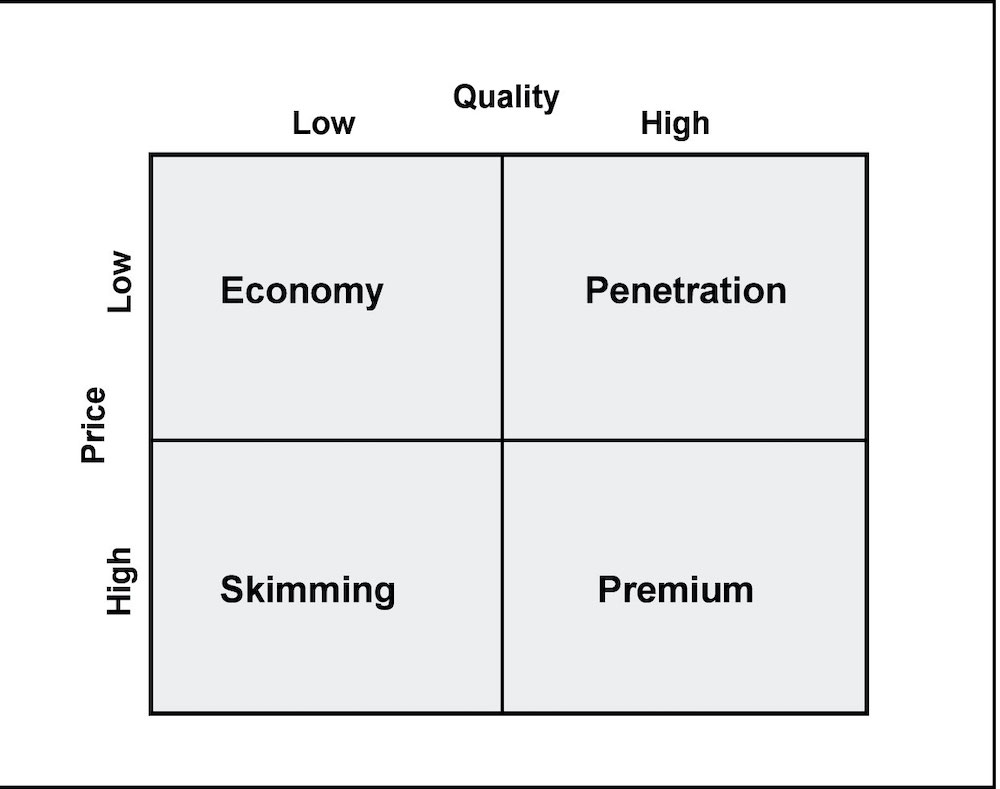
Image source: Wikipedia
Or you could go premium if you go lower volume, but make up for it with higher customer lifetime value (LTV) with better service or features.
Step 6: Set your sales and distribution plan
Do you plan to sell direct-to-consumer, through wholesalers, or retailers? Is your product sold only online?
Your distribution plan should have location-based strategies or tactics you employ to sell your products. You want to include information about where your potential customers buy similar products and services from competitors. How will selling through those channels affect your brand, sales volumes, costs, and profit margins?
Just as importantly, what message does it send to your target customers if you sell through those distribution channels? For example, how will your customers perceive your product when you sell through a boutique versus a mass retailer?
Or if you go wholesale, you might pay higher commissions, but make up for those expenses through higher sales volume because you’d get access to larger stores than you might own.
If you go direct-to-consumer, you eliminate the middleman expenses such as wholesale, retail, and sales rep commissions, but also add other expenses such as shipping and customer support staff.
For a B2B SaaS solution, distribution is quite simple as everything would happen online, keeping your overhead costs much lower than traditional brick-and-mortar or even eCommerce businesses with physical products. That alone greatly simplifies the go-to-market strategy for B2B SaaS companies.
Step 7: Choose the right metrics to monitor your progress
You’ll want to monitor your GTM strategy early and often, giving you the chance to make changes before you run out of runway. Some of the most informative metrics you can use are:
- ROI for sales strategy (total revenue divided by total selling costs)
- CAC (customer acquisition costs, or what it costs to acquire a single customer)
- LTV (customer lifetime value)
- Lead conversion rates
- Sales cycle length (average time it takes to close a sale)
Here are some other sales metrics you can use in your go-to-market strategy.
What Are the Elements of a GTM Strategy Template for B2B?
In the case of B2B, there are three key elements of your GTM strategy template:
- Market intelligence
- Segmentation
- Cost to acquire a customer
Market intelligence in your go to market framework
It’s not enough to just understand the market. You’ll also need to understand how your product relates to your target market.
To develop your GTM strategy template, you’ll need to do the research and work on your messaging in steps 1 and 2 above, as well as figure how your offering is different from those of your competitors.
Since we’ve already gone over the steps that cover this element, we won’t rehash it here and instead move on to segmentation.
Segmentation of your B2B customers
When we map the number of deals committed against a listed price (ACV), you will notice deals starting to segment around discount levels.
When salespeople get involved (!) discount levels quickly start to group around 10% and 20% levels. Although this is depicted in the shape of a bell curve it does not have to be.
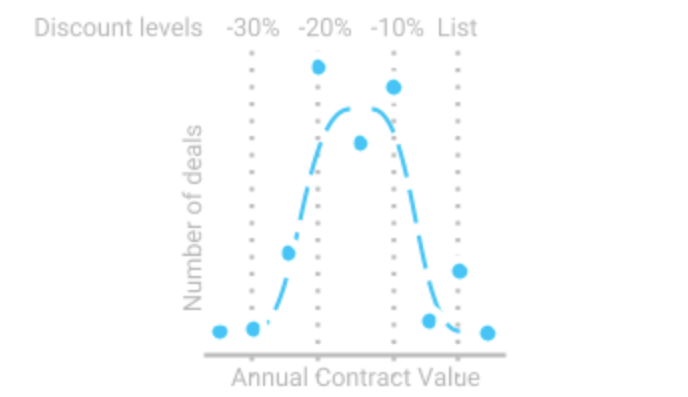
Figure 1. Distribution of B2B deals as a function of price (a product of discount and list price).
B2B segments:
- Enterprise/Company-wide – selling a platform (CRM/ERP) using multi-year contracts
- Mid Market/Department – selling platforms and applications using annual contracts
- SMB/Group like – selling applications using an annual/monthly/usage contract
- Pro-user – selling a browser plug-in under a freemium/monthly/usage contract
You’re likely to see a number of bell curves across these segments. The next figure shows such segmentation against the number of deals per segment.
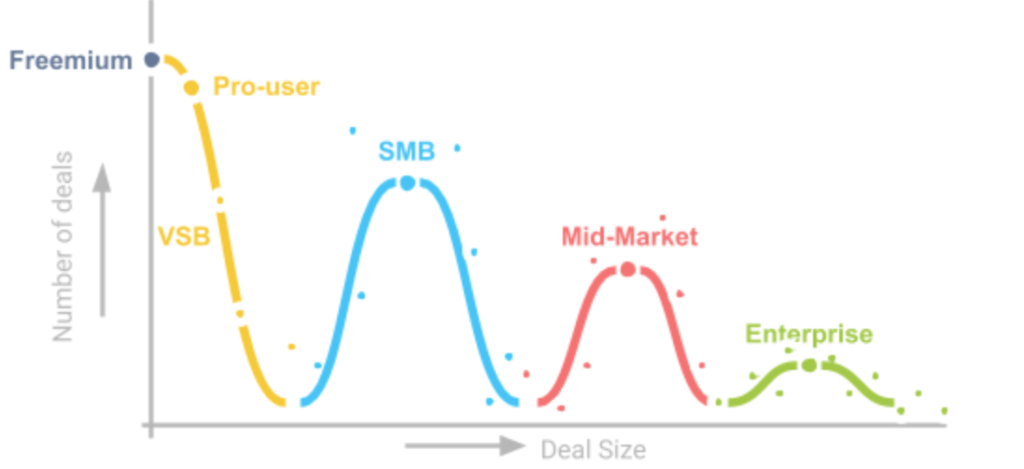
Figure 2. Segmentation based on Deal Size (ACV).
The SMB Segment: Going Upstream vs. Downstream
When SaaS companies start in SMB and move towards Enterprise, this is referred to as moving Up-Stream. When companies sell in the enterprise and they start to sell to the faster-paced SMB market or the Pro-User market is called going Down-Stream.
The most common problem is that companies move UpStream or Downstream by just hiring additional salespeople, not contemplating the consequences for the other parts of the organization. However, pursuing a new segment needs to be a company initiative. It may even require you to reassess your product-market fit and reimagine your GTM strategy template.
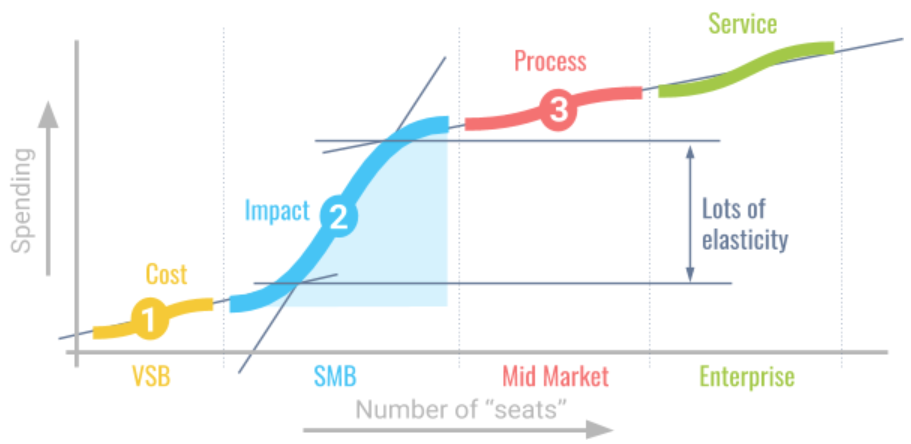
Figure 3. The importance of the SMB segment.
Comparing spending flexibility, you’ll find that Pro-user is cost-centric and max out at spending $1,000/yr. In Mid-Market, the value of a specific product is obscured by many other products and often you find yourself selling to only a small group or department at best.
Enterprise vs SMB: The enterprise market may use lengthy RFP/RFQ purchasing procedures based on spending thresholds and are often focused on the service offered. SMB, on the other hand, offers greater flexibility—spending anywhere from $1,000 to $100,000, and with shorter 30-90 day sales cycles as they seek immediate impact.
CASE IN POINT:
An SMB with a $100k problem is willing to spend $12k on a solution. That same SMB is willing to spend 3x that for a $300k problem. 3x the problem, 3x the spend. An enterprise with a $1M problem is willing to spend $100k, however, it’s hard to convince the enterprise to spend 3x the money for 3x the problem. Purchasing procedures and spending thresholds put in place over decades have flattened out spending flexibility.
It explains why so many SaaS startups use SMB as a jumping-off point in their initial go-to-market strategy. This is in comparison to the Perpetual Software industry, which uses the Enterprise market as the starting point. The go-to-market strategy for startups won’t be the same for established businesses (more on this below).
How CAC affects your GTM strategy
Selling a $5/month Chrome plugin to a Pro-user? It’s foolish to travel across the country for an in-person demonstration!
Likewise, it’s foolish to expect an Enterprise client to commit to a $100,000 platform by simply visiting your website and entering their credit card details.
In other words, one SaaS go-to-market strategy isn’t the same as the next. It’s based on the unique details of your business and its offerings.
Clearly, each of these has a different Go To Market approach for which the customer acquisition cost (CAC) has to fall in line with the revenue it generates.
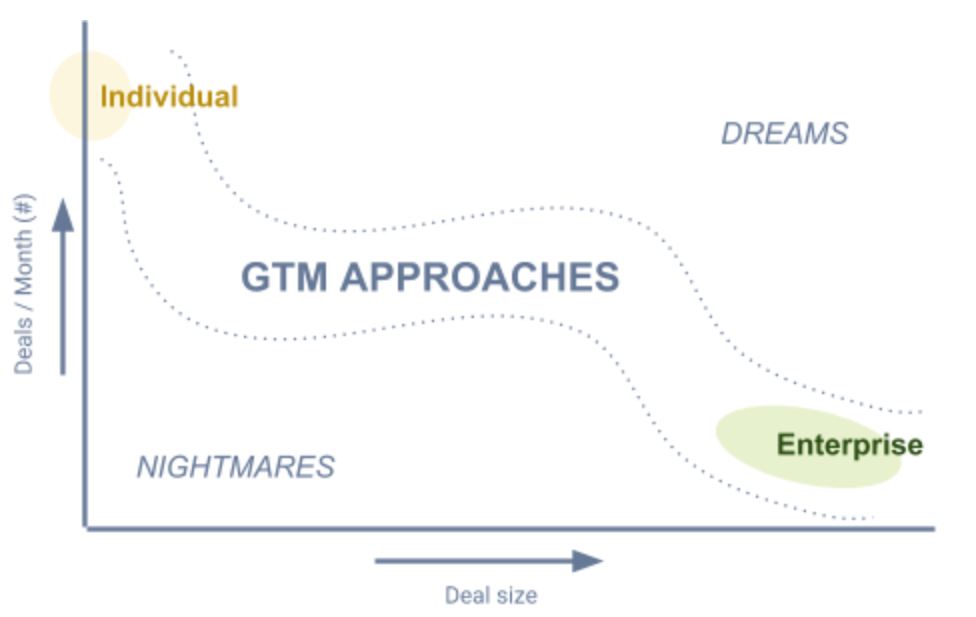
Figure 4. GTM Approaches as a function of Annual Contract Value.
Below you will see a variety of GTM approaches we know per today as a function of Annual Contract Volume and Volume of Deals/Month. Each of these approaches is modeled on the best customer experience.
For Web Sales, this may be optimized for speed (online), and for Local Sales—complexity (integration in the existing infrastructure).
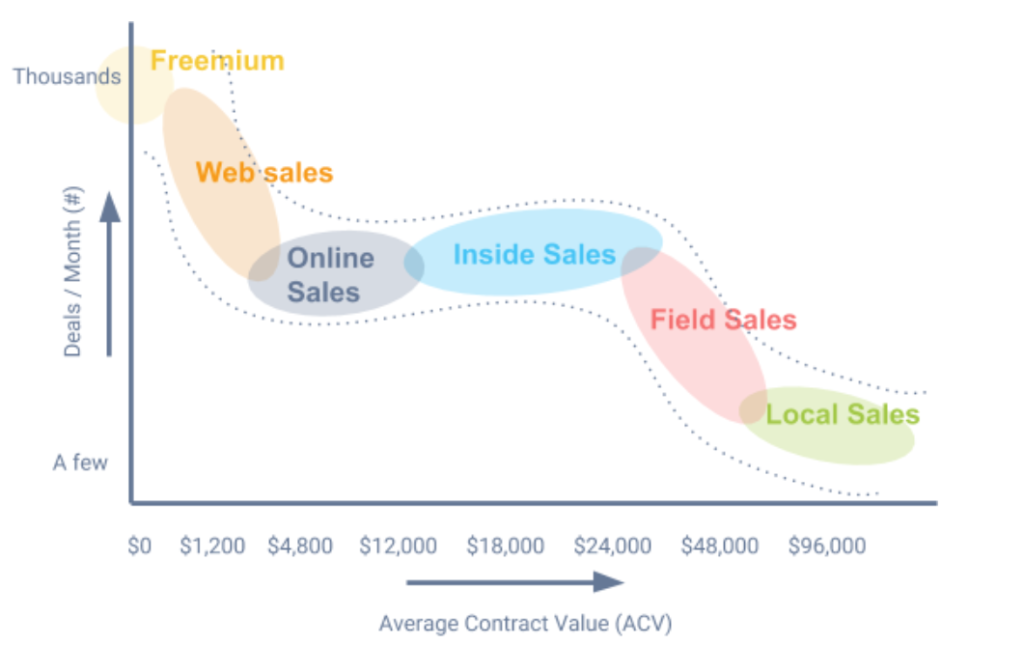
Figure 5. GTM models as a function of Annual Contract Value.
6 Go To Market Strategy Examples Based on Your CAC

1) Freemium
A customer signs up for a free service. The customer gets hooked and has to pay for more premium services (e.g. more storage, personalization etc.) A common strategy here is to use these Freemium customers as a lead source.
Transactions are processed online via credit card, questions are addressed through the FAQ and YouTube videos. Think of a Google Chrome plug-in/extension as an example.
2) Web sales
If multiple customers from the same domain name sign up for a Freemium account, you can convince them to purchase”Corporate License” with “security” as an added feature. This can be automated. Think of LinkedIn’s Sales Navigator subscription as an example.
3) Online sales
As the solution becomes more comprehensive, your customers tend to have more questions. For example, signing up for a Zoom.us group license.
Customers want to talk to someone instead of using the online FAQ. Online chat offers a solution where Inside Sales Reps (ISR) field questions from the customer. This is preferred over inbound phone calls to avoid any challenges with accents etc.
4) Inside sales
A. Inbound-centric
As the solution increases in complexity, once again more questions arise and customers go through a purchasing procedure.
They need assistance. They reach out to talk to an expert, that is, an Account Executive (AE). A Sales Development Rep (SDR) picks up the phone and directs the call based on the qualification. This works well for growth organizations that use marketing to generate inbound leads.
B. Outbound-centric
The solution does not generate enough inbound leads, and/or the number of inbound leads generated doesn’t match quality.
A group of Sales Development Reps identify and contact prospective customers and set up meetings with solution experts (AEs) often based on a CRM, although sales engagement tools are also becoming more popular. This is one of the most common approaches to kick-start sales — it’s often based on a service that sits on a platform (CRM).
5) Field salesforce
This applies to platform sales such as an ERP or CRM.
Customers may demand custom integrations with their databases, workflows etc. They want to discuss their specific situation and their customized needs.
A salesperson gets on an airplane and visits the customers. To identify these customers you need a more sophisticated approach with an Account Development Rep (ADR) who targets multiple people in the account with coherent messaging aka account-based selling. This is often split by region to keep the travel cost low.
6) Local salesforce
You may wish to target AT&T Dallas and therefore use a local sales approach with a Dallas-based sales executive. This local salesperson is expected to have in-depth relationships within the account that lets him navigate their org chart easily.
This tends to be the most costly approach, but it also comes with the highest rewards. This approach is often reserved for million-dollar deals, under a multi-year, wall-to-wall enterprise deal to justify the cost associated with a dedicated resource.
Case Example: Setbacks of Using a 2-Stage Inside Sales Organization
2-stage inside sales organizations consist of SDRs who send thousands of emails and place hundreds of phone calls to set up meetings for AEs.
The AEs then gain contractual commitment. With slumping response rates to emails and phone calls, this approach has caused industry-wide failure.
- An SDR/AE team closes 3 deals/month at an ACV of $6,000/deal.
- The AE has a win rate of 1 in 5 deals, meaning 15 SQLs are needed per month.
- The SDR sends out a couple of hundred emails and makes dozens of phone calls each month to secure these 15 SQLs.
- The SDR/AE combo closes 12 x 3 x $6,000 = $216,000 in ARR per year.
- Total compensation is $80,000 for the SDR and $150,000 for the AE. Thus, adding up to a total of $230,000.
Here’s the problem:
The hard CAC of $230,000 exceeds the first-year revenue of $215,000.
Solution 1: Tackle compensation
Lower the SDR/AE compensation by moving the team to cheaper locations.
For most companies, the efficiency lost being remote from the company results in reduced effectiveness nullifying the impact.
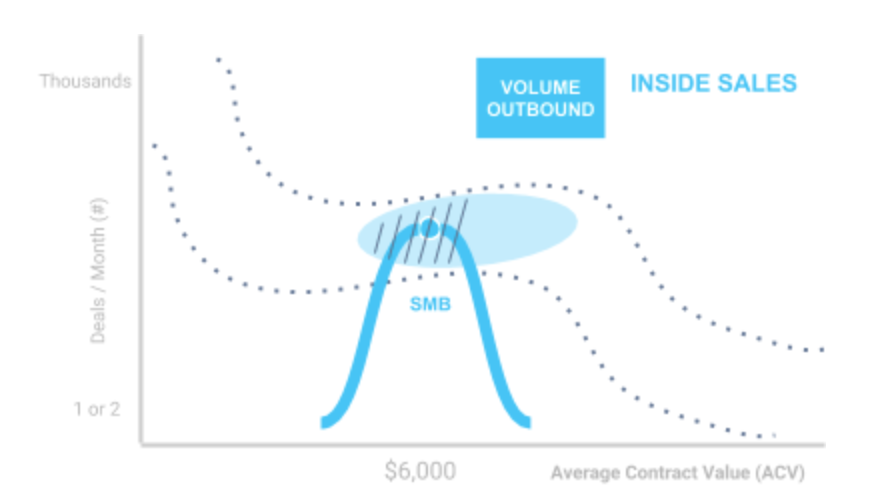
Figure 6. Use of Volume-based outbound at an ACV of $6,000 using a 2-stage sales model.
Solution 2: Apply a different prospecting process

Figure 7. Split the model.
Solution 3: Raise your product’s price (remember the elasticity in SMB!)
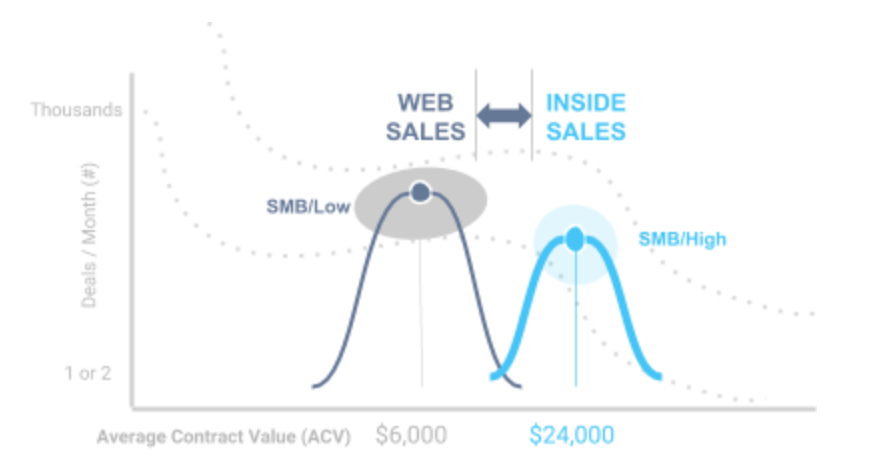
Figure 8. Raise the price and use the inside sales team on bigger deals.
Getting Started: Resources for Building Your Go-To-Market Strategy
From modeling your go-to-market strategy framework to applying it in the right regions, segments, and markets, there’s no shortage of questions to answer and details to discuss with your team. But remember, you don’t have to do everything at once. Start where you’re comfortable, have a clear vision, and make changes that suit your business along the way.
It doesn’t matter if you’re creating a SaaS go-to-market strategy or a plan for a physical product, once you have the guidance you need you’ll feel confident in your ability to carve out space in your market.
We have some resources to help you get started:
- The 4 Components of a Winning Go-To-Market Framework [Panel]
- How to 10x Your Sales Efficiency [Webinar]
- Free Sales Plan Template [GTM Strategy Template]
- B2B Marketing Strategy Framework [Article]
- Moving to Enterprise Sales [Article] (only if you are ready for enterprise customers)
Have we answered your question of what is a go-to-marketing strategy?
RELATED: 5-Step Plan to Penetrate the Market in 90 Days (In Any Industry)







